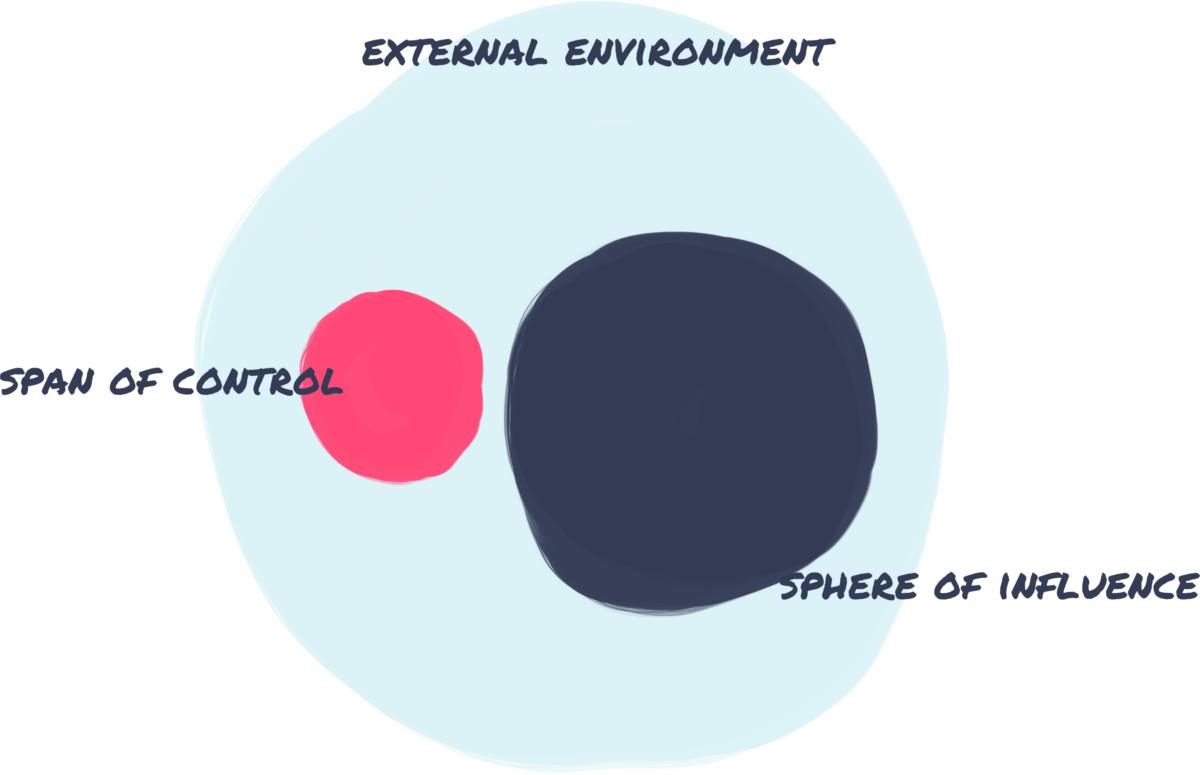As product leaders, we don’t directly control much.
That’s why one of our most important skills is the ability to influence.
When I was at Intuit, I often heard CEO Brad Smith say: “Your title makes you a manager, but your people determine whether or not you’re a leader.” I think about this a lot, especially when considering the role of a product manager.
Your likelihood of succeeding as a product leader is directionally proportional to your ability to influence and inspire others.
Because this condition seems to be most true when considering successful product leadership, we need to understand what influence is and, more importantly, learn how we can get better at it.

The way I see it, our span of control includes all those things in a system that we can change on our own.
Our sphere of influence, meanwhile, includes activities that we can impact to some degree, but can’t exercise full control over.
The external environment includes the elements over which we have no influence.
In the grand scheme of things, the pink dot begins to feel quite small. And yet, you’re responsible for successfully executing the company’s product vision. In today’s SaaS world, that means quite a bit.
Building Your Influence
Over the years, I’ve had the incredible luxury of being tutored by some of the great leaders in the tech world. Before writing this piece, I listed out the characteristics of those leaders who had the greatest ability to influence and inspire both me and many others. In the end, I had a list of several leaders and many of their characteristics. Among those there were three that overlapped across the majority of those leaders I listed:
Trust
At the top of the list is trust. Without it, you’re incredibly limited. Without it, none of the other characteristics or attributes matter. Trust in not automatic–it must be earned. It is earned by showing up consistently–whether it is among your peers, your direct reports, or those above you. It’s about being transparent with your intent and following through with commitments. It’s about being genuinely interested in both those you work with and the customers you serve.
Active Listening
This is always more difficult than it sounds. It seems we’re always on, always connected, and often distracted. Active listening is about being present and intentional. We’re often thinking of our response while others begin to talk. We often advocate more than we inquire. Active listening allows us to better understand context, understand the problem, and determine the best solution. It is often difficult to influence if you cannot be influenced. It’s more important to get it right than to be right.
Action-oriented Leadership
I often talk about the importance of having deep customer empathy. But on the flip-side, empathy without action is worse than no empathy at all. Those that have a bias to act — those that lead by doing — often have an incredible ability to influence and motivate. One of my favorite colleagues and I used to “judge” our leaders by what we called the “say/do ratio.” Do leaders show or tell? You severely limit your ability to influence if you say more than do. It has always been the case. Remember to not judge your day by how full your calendar was, judge it by what you were able to accomplish.
As product leaders, “influential” should be at the top of our “to be” list. To become influential we must be intentional–we must learn to build among your team and across the organization. You must learn to truly listen–to customers, to employees–to all key stakeholders. And ultimately, you must find yourself walking the talk.

